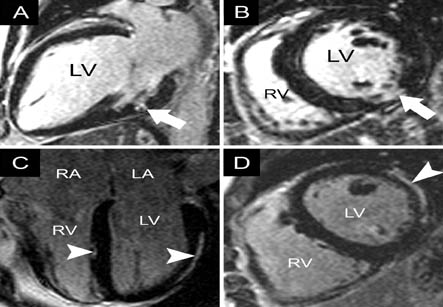Cardiovascular MRI
Introduction
A cardiac MRI (CMR) test is an evaluation of the heart using a specialized MRI camera. This test provides a very accurate assessment of the structure and function of the heart. It can also help in evaluation of the status of the major blood vessels within the chest. With the injection of gadolinium contrast, information can be obtained about the blood supply to the heart, status of heart muscles and any scarring in the myocardium if present.
Purpose of cardiac MRI:
1. To investigate further about structural abnormalities of the heart or unusual findings noted during other heart imaging studies.
2. To monitor heart muscle thickness and function, and heart size in conditions such as valve disease, cardiomyopathy, chemotherapy, etc.). These parameters need to be checked at regular intervals.
Iran is among the top 10 countries in treating cardiovascular diseases, while it ranks first in the Middle East

3. To assess the effect of bypass surgery or angioplasty on the heart function. The improvement of heart function needs to be assessed after these procedures in patients with previous heart muscle damage (i.e. from a heart attack).
4. To evaluate the structures immediately around the heart such as aorta, pericardium, pulmonary arteries, etc.
Preparations
The patient needs to fast for at least three hours prior to the MRI examination, in case if contrast injection is required. It should be noted that not all CMR tests require contrast injection, but the need to use the contrast is not always known prior to the start of the study. Unless instructed otherwise by the primary physician, the usual medications should be continued as prescribed. The patient should wear clothing which will allow getting undressed easily from the waist up. This is needed as a few electrodes need to be attached to the chest and the patient is often instructed to change into a gown.
The procedure
The actual test will take approximately one and a half hours. The patient is instructed to change into a gown and remove all metallic objects such as watches, jewellery, belts, etc. Electrodes are attached to the chest to monitor the heart rhythm. The patient lies down on an imaging table and a special imaging coil will be secured over the chest. Then, the patient is moved into the MRI scanner such that the head is inside the scanner. The healthcare providers will make you as comfortable in the scanner as possible, and can provide you with earphones to listen to music or radio station of your choice. Most of the time, the patient is lying quietly in the scanner. Intermittently, you will be asked to hold your breath for several seconds while MR pictures of the heart are being taken.
Further tests or treatments required are then decided based on the results of the cardiac MRI.
The actual time in the scanner can range from 30 minutes to one hour. After all the views and pictures are acquired, the electrodes will be removed and the patient can go home immediately. If a particular examination requires contrast injection, an I.V. will be started either before or sometime during the examination. The contrast dye will be injected when required. The I.V. will be removed before you leave.
Safety concerns
A cardiac MRI test is a very safe procedure. There is no radiation exposure and the side effects are very rare. Sometimes patient can feel anxious or even claustrophobic inside the scanner. This in not dangerous, but can be very uncomfortable. Closing your eyes and concentrating on the music while in the scanner can relieve this anxiety. The technician remains in constant contact with you, and will let you know what is happening and what to expect as the test is going on. If required, medications are given to help the patient to relax. Gadolinium injection is very safe with a very low risk of side effects.
Results:
The test will be reviewed and interpreted by a cardiologist and a report is usually provided to the primary physician who will disclose and explain it to you. Further tests or treatments required are then decided based on the results of the cardiac MRI.